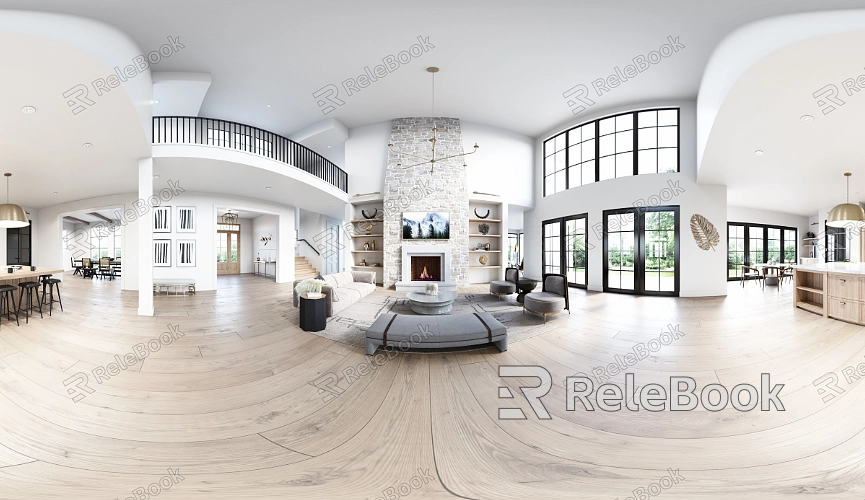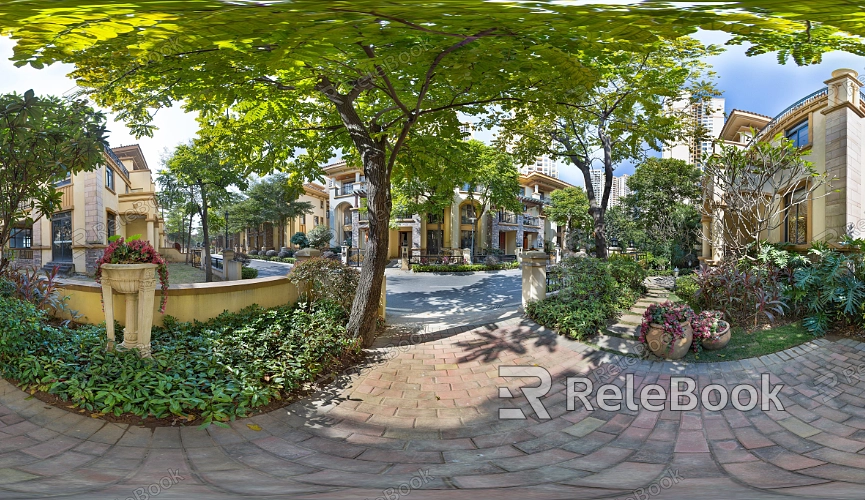How Many Images for an HDR
In 3D software like 3ds Max, Blender, and Maya, HDR (High Dynamic Range) is widely used to enhance image brightness and color details, allowing for more realistic visual effects. A common question that arises when working with HDR is, "How many images are needed to create an HDR?" This article delves into this topic, offering insights that will help designers better understand and utilize HDR technology.

1. Understanding the Basics of HDR
The core principle of HDR involves merging multiple images taken at different exposure levels to capture a broader range of light details in a scene. Typically, these images include:
Underexposed Image: Captures details in the bright areas.
Normally Exposed Image: Focuses on capturing midtones.
Overexposed Image: Retains details in the shadows.
By combining these images, HDR creates a balanced image that is neither too bright nor too dark, revealing details across all exposure levels.
2. Common Number of Images for HDR
In practice, designers usually use 3 to 5 images with varying exposures to create an HDR. These images generally include:
Three Images: One underexposed, one normally exposed, and one overexposed—suitable for standard HDR scenarios.
Five Images: Adds extreme underexposure and overexposure shots—ideal for more complex lighting conditions, enhancing detail further.
The number of images chosen depends on the complexity of the lighting in the scene and the designer's desired outcome.
3. Choosing the Right Exposure Bracketing
Exposure bracketing is a crucial factor when creating HDR images. Common bracketing intervals include 1EV, 2EV, or higher:
1EV Interval: Best for scenes with subtle lighting variations, capturing finer light details.
2EV Interval: Suitable for scenes with high contrast, quickly covering the necessary exposure range.
The choice of bracketing interval directly influences the final HDR image's quality and the complexity of the production process.

4. Creating HDR with RAW Format
To achieve a higher dynamic range, it’s recommended to shoot each image in RAW format. RAW files retain more image details and color information, offering greater flexibility in post-processing for adjusting exposure and tones.
Advantages of RAW: Preserves more details, offering broader scope for post-processing.
Disadvantages of JPEG: Compression leads to information loss, and the dynamic range is limited.
Using RAW format maximizes the HDR effect and minimizes the loss of image quality during post-processing.
5. The Process of Merging Multiple Images
The typical workflow for creating HDR images in 3D software includes:
Importing Images: Load the different exposure images into the HDR merging tool.
Aligning Images: Ensure the images are precisely aligned to avoid ghosting.
Merging HDR: Use the software's HDR merging feature to combine the images into a single HDR image.
Tone Mapping: Adjust the tone mapping of the final image as needed to achieve the desired visual effect.
This process can be efficiently carried out in software like Adobe Photoshop or Photomatix.
6. Common Challenges in Creating HDR Images
When creating HDR images, designers may encounter the following challenges:
Ghosting: Misalignment of exposure images may cause ghosting. Using a tripod during shooting or utilizing the software's auto-align feature can help avoid this.
Increased Noise: Overexposed images may introduce noise, particularly in shadow areas. Noise reduction tools in post-processing can help mitigate this issue.
Addressing these challenges will enable designers to produce higher-quality HDR images.
The number of images required to create an HDR depends on the scene's complexity and the desired effect. Typically, 3 to 5 images are sufficient for most HDR needs, while shooting in RAW format and selecting the right exposure intervals can further enhance image quality. This guide aims to assist you in your HDR creation process.
If you're looking for high-quality HDR resources, 3D textures, SketchUp models, or 3ds Max models for your projects, Relebook offers a wide selection to help you achieve outstanding visual effects in your work.

